Content
Pickled apples are a traditional Russian product. Our ancestors knew well how to preserve this healthy fruit until spring. There are many old recipes for pickling apples with various and sometimes very unexpected additions. Most of these recipes are for large barrels. In such a container they did sauerkraut with apples, and soaked them using rye straw. In the old days, families were large, and there was also where to store such a blank. Now the city dwellers are the overwhelming majority, the basement in the city is a rarity. Therefore, housewives prefer to cook pickled apples in a small bowl, for example, in 3-liter jars.
Why pickled apples are useful
Apples, both fresh and prepared, are a useful and necessary product for humans. To maintain a healthy gut, they need to be consumed daily. Urination is a kind of fermentation, and many people know about the benefits of fermented foods. The resulting lactic acid normalizes intestinal function, thereby stimulating the immune system. Therefore, such a product should be in every home.
What is the process of urinating
Urination happens:
- sweet, while in the brine, in addition to salt, sugar is also added;
- sour, according to this ancient method, rye flour prepared in a special way participates in urination;
- salty, sugar is not added, in the process of lactic acid fermentation, only the sugars contained in the fruits themselves are involved.
But whichever method of urinating you choose, the fruit must be selected and prepared correctly.
Selection and preparation of apples
There were not so many varieties of apples in the old days. Late varieties were always chosen for urinating, the old and proven Antonovka variety is considered the best.
So delicious summer apples are better to just eat or leave for jam, nevertheless there is a recipe for soaked apples and these varieties.
The fruit should be ripe without damage or rot, so it is better to remove them from the tree, rather than picking up a volunteer. But do not rush to soak freshly picked fruits. They have to rest for a couple of weeks.
The size of the fruit is also important. Large apples do not fit well in the urinating container, they are soaked with brine longer, so the fermentation process is delayed. Very small ones are also not suitable, but medium-sized ones are just right.
Cooking recipes
Let's prepare pickled apples in jars using old recipes.
Apples, soaked with rye flour
A 3-liter jar will require:
- apples - 2 kg;
- rye flour - 30 g;
- salt - 1/3 tbsp. spoons;
- water - 1.5 liters.
Preparing the leaven. To do this, pour boiling water over rye flour mixed with salt. The hardest part at this stage is to achieve a homogeneous mixture.
We filter the settled and cooled starter culture using cheesecloth. Place washed and dried apples in clean jars. Fill with sourdough. We turn the plastic lid over and put it in the jar, bending it a little. We put oppression on it.
A small jar or bottle of water is suitable as oppression.
The fruit absorbs the fill very well.If it no longer covers them, you will have to make extra sourdough. The fermentation process will last at least one and a half months. The place should be cool: balcony, basement or refrigerator. When it is over, we remove the oppression, store the workpiece in the cold under a regular plastic lid.
Apples, soaked with mint leaves, cherries, currants
For 3 cans with a volume of 3 liters you need:
- 5 liters of water;
- a glass of sugar;
- 1 tbsp. a spoonful of salt with a slide;
- apples - how many will fit depends on the size;
- mint, lemon balm, oregano, currant and cherry leaves.
We put several leaves of cherry, mint, currant in sterilized jars. We lay the apples, lay each layer with leaves. The leaves should be on top too.
Prepare the filling: boil water with sugar and salt for 5 minutes, cool. Fill the fruits so that the filling completely covers them, put the rest of the filling in the refrigerator, we will add it to the jars as it is absorbed into the apples. The fermentation process takes place at a temperature of no more than 22 degrees.
During fermentation, foam forms, it must be removed. It contains harmful microorganisms that can spoil the product. Prescription pressure is not provided, but it is imperative to monitor the wort level in the jar and top it up as needed. The fruit should be covered with it.
When fermentation is over, put the jars out in the cold. The best temperature for keeping pickled apples in jars is not higher than 6 degrees Celsius.
Apples soaked with basil and honey
Another simple recipe for making soaked apples in jars for the winter. Instead of sugar, we will use honey, currant leaves, basil sprigs will give the original taste, and the sourdough will have to be made with rye flour.
Ingredients for 10 three-liter cans:
- 20 kg of winter apples;
- 100 g basil sprigs;
- 20 pcs. currant leaves;
- 0.5 kg of honey;
- 170 g coarse salt;
- water - 10 liters, better than spring water;
- 150 g rye flour.
Boil water and cool to 40 degrees, stir honey, salt and flour in it, rub the lumps thoroughly. Allow the wort to cool to room temperature.
Greens and dishes for fermentation are well washed. Divide the currant leaves into 2 parts. One should be laid out on the bottom of the cans, spreading evenly. Next, lay out the apples, layering them with basil. Lay out the remaining currant leaves on top, fill with the prepared wort and set the oppression. Apples will ferment for about 2 weeks, the best temperature for this is about 15 degrees Celsius. The finished product is stored in the cold.
Pickled apples with viburnum juice
Apples will be very tasty if fermented according to the following recipe. The resulting brine has healing properties. Ingredients for 10 cans:
- 20 kg of apples;
- 8 liters of water;
- 2 liters of freshly squeezed viburnum juice;
- 1 kg of sugar;
- 50 g of coarse salt.
They wash the dishes, apples. Stir salt, sugar in boiling water, cool, mix with juice squeezed from viburnum berries. To do this, it must be sorted out, washed and rubbed through a sieve. Apples laid out in jars are poured with cooked wort, oppression is set and sent to fermentation. The product is ready in a month and a half. Store in a cool place.
Soaked White filling
Winter apples are the best for peeing, but there is an exception. A tasty product is obtained from White filling apples.
Ingredients for 2 cans of 3L:
- apples - 3 kg;
- salt - 3 tbsp. spoons without tops;
- sugar - 6 tbsp. spoons without tops;
- 9% vinegar - 9 tbsp. spoons;
- 3 horseradish leaves;
- 12 cherry leaves;
- 6 carnation buds.
The apples of this variety are too sweet to soak in the usual way, so we will marinate them. The taste of such fruits is close to soaked ones.
We sterilize the jars, put the spices, evenly distributing them over the jars. We spread the washed fruit, fill it with boiling water. We wrap the jars covered with lids for 10 minutes. We drain the water, bring to a boil and pour it back into the jars. Drain the last time, add vinegar, sugar, salt. We boil the marinade, pour it into jars, roll it up, turn it over and let it cool under the covers.
Conclusion
Regular consumption of soaked apples will improve the functioning of the intestines, strengthen the immune system, and enrich the body with vitamins and minerals.
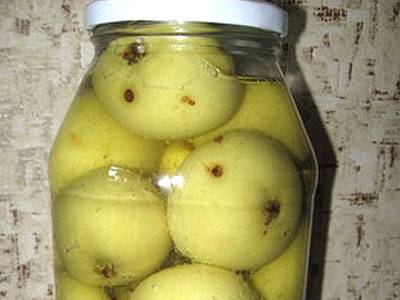
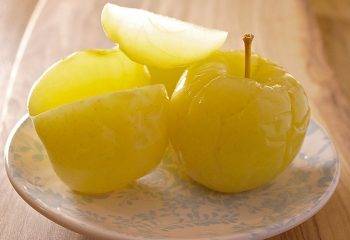
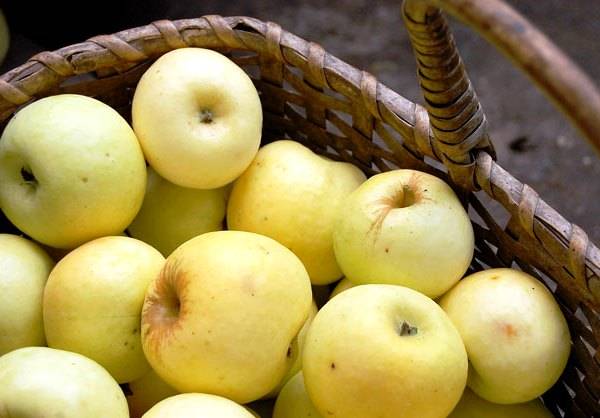
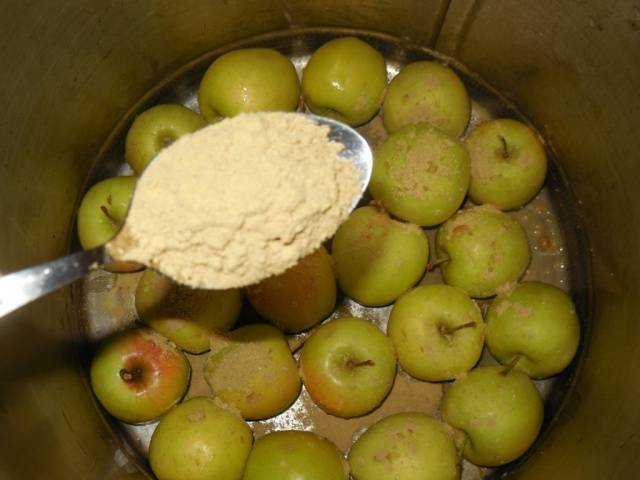
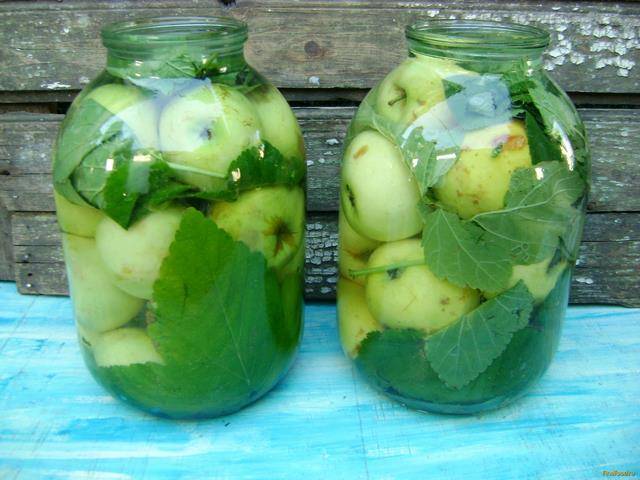
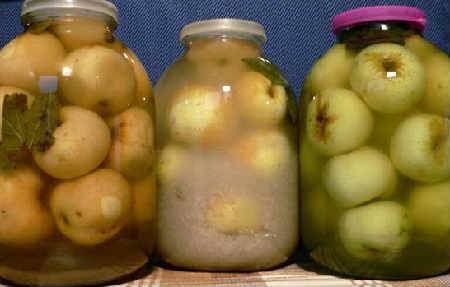
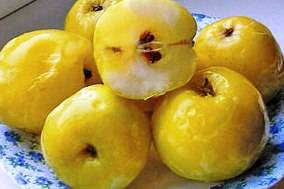
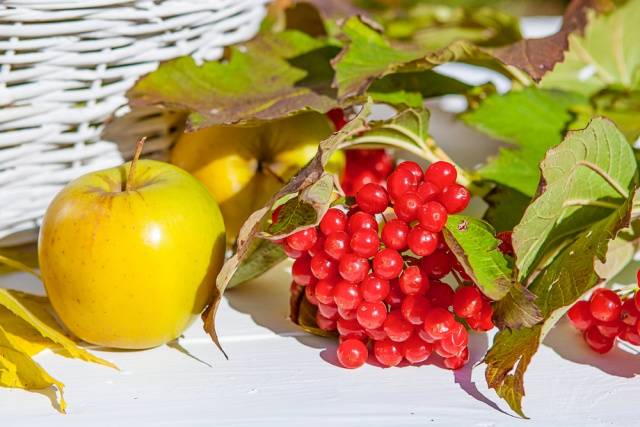
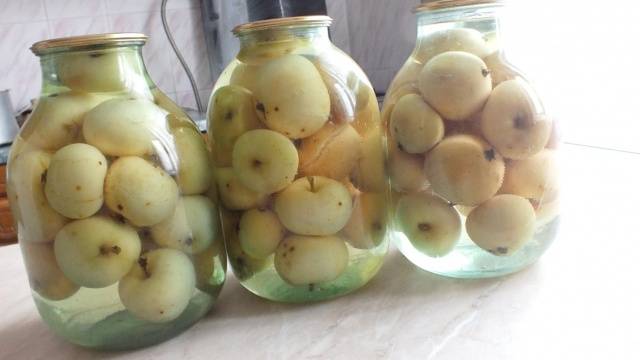
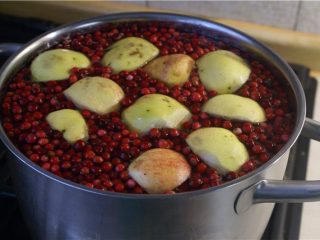


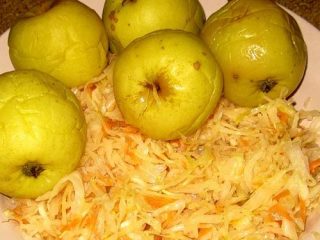
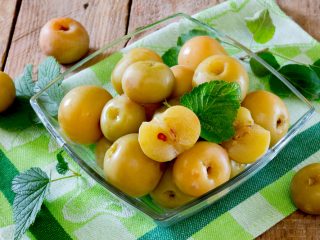
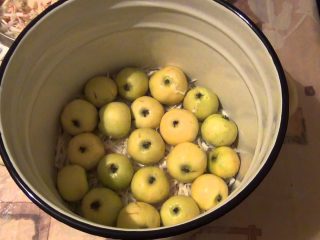


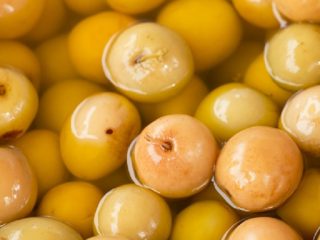
Good afternoon, Nikolai! The composition and purpose of currant and grape leaves varies greatly. And although the benefits of both are undeniable, currant leaves are put in marinades to give them a specific aroma. Moreover, thanks to the currant leaf, cucumbers and apples retain their original density, without softening during the fermentation process. After all, crunchiness is the main indicator of the correct salting of the product. Currant leaves have bactericidal properties.
Grapes cannot boast of such a property. The grape leaf has a lot of useful and nutritious substances. It is often used in cooking and can often be found in traditional medicine recipes. The leaves are heat treated (for the preparation of second courses), pickled or frozen. But it is not used as a component for pickling and pickling. It will not give apples such an exquisite aroma and firmness as currants.
There is one thing but ... it is unlikely that now there would be such a huge number of the most diverse recipes, if not for a person's love for experiments, for the search for new flavors. Thanks to such bold innovations, new dishes are emerging. Try it, maybe you will become the author of a new recipe for delicious, soaked apples.
Good day. Can I use a grape leaf instead of a currant leaf?